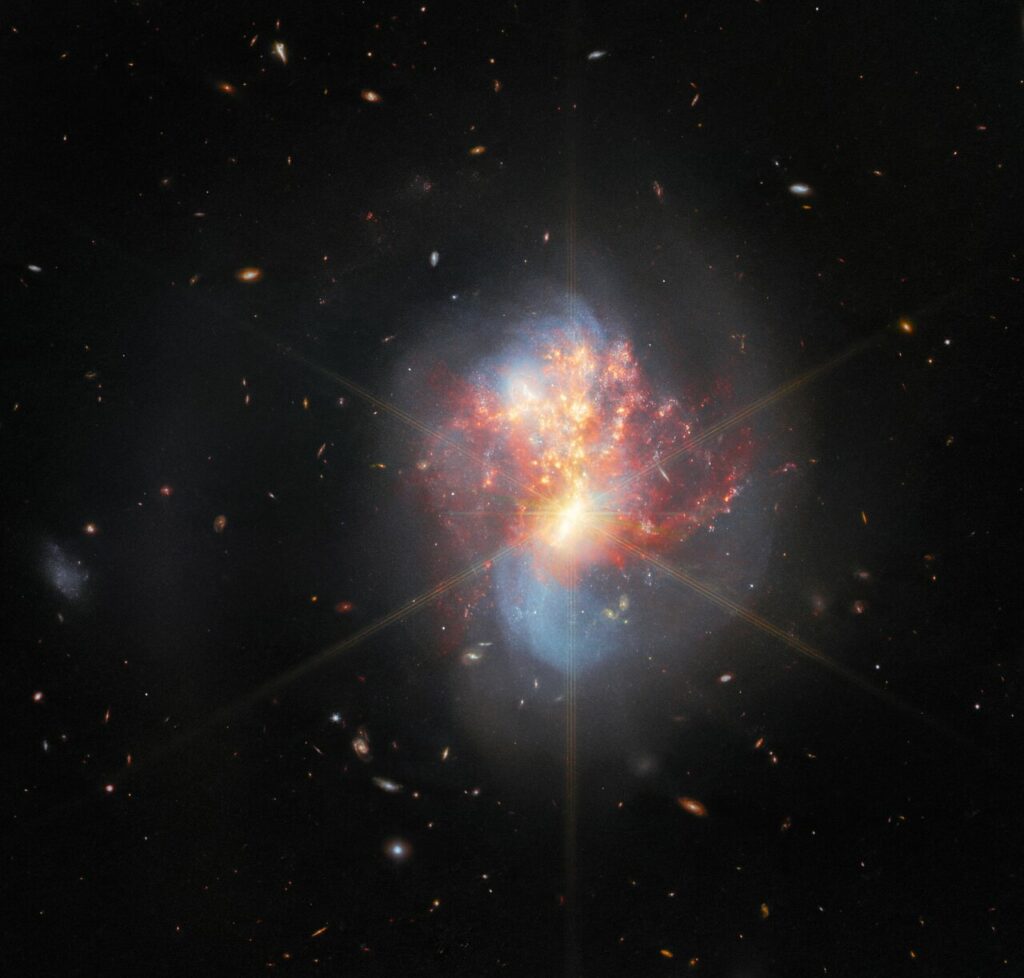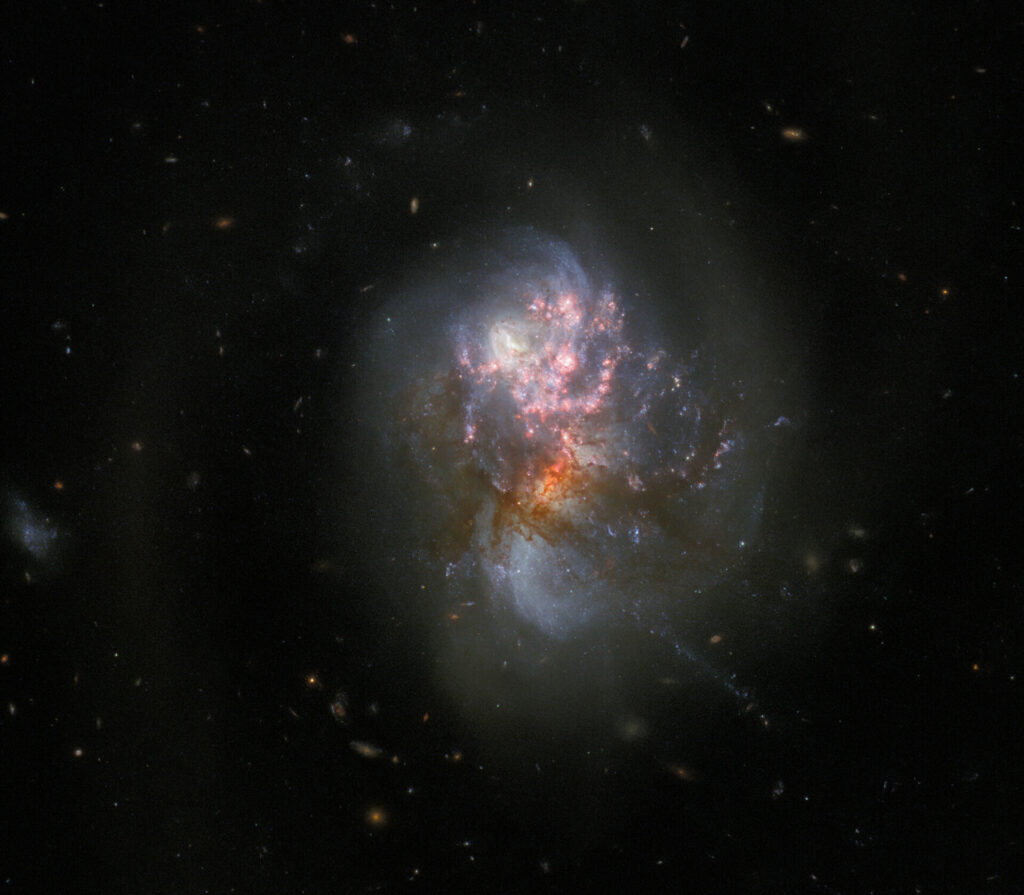The James Webb Space Observatory (JWST) has transmitted another spectacular image of a deep space object to Earth. On it you can see a pair of colliding galaxies, known as IC 1623.

IC 1623 is located at a distance of 270 million light-years from Earth in the direction of the Cetus Constellation. Its constituent galaxies are already actually intertwined with each other. This led to the destruction of their original structures, as well as a giant outburst of star formation. The newly formed system forms new luminaries twenty times faster than our Milky Way.
In the past, IC 1623 has repeatedly been the object of observations for various telescopes, including the legendary Hubble. However, their work was seriously hampered by a thick band of dust hiding the galactic center. Due to its ability to conduct observations at near and medium infrared wavelengths, JWST managed to circumvent this problem. The telescope managed to capture many previously unknown details of the “galactic accident”.

With a high degree of probability, IC 1623 is currently undergoing processes that will eventually lead to the merger into a single whole of two supermassive black holes from colliding galaxies. It is also worth noting that the core IC 1623 is very bright and compact. It emits such a large amount of light that it forms diffraction rays in the JWST image. This optical effect is related to the design features of the telescope. As a rule, diffraction rays are observed around the stars of the Milky Way that have been captured by telescopes.
Recall that James Webb recently photographed the famous Pillars of Creation.
According to https://esawebb.org
Follow us on Twitter to get the most interesting space news in time
https://twitter.com/ust_magazine

